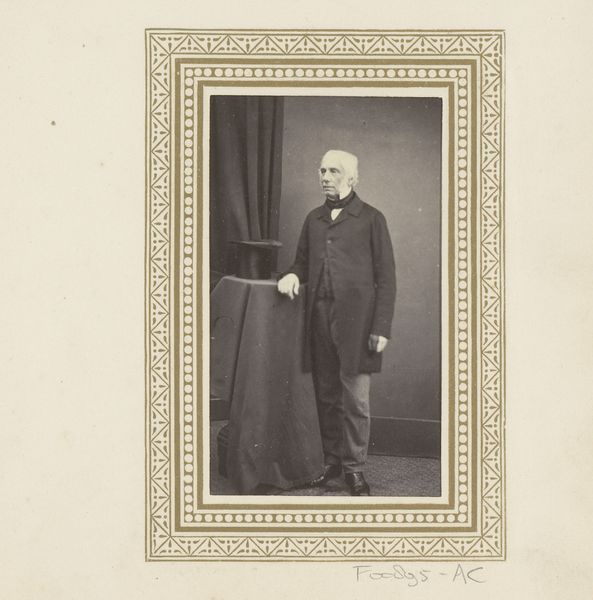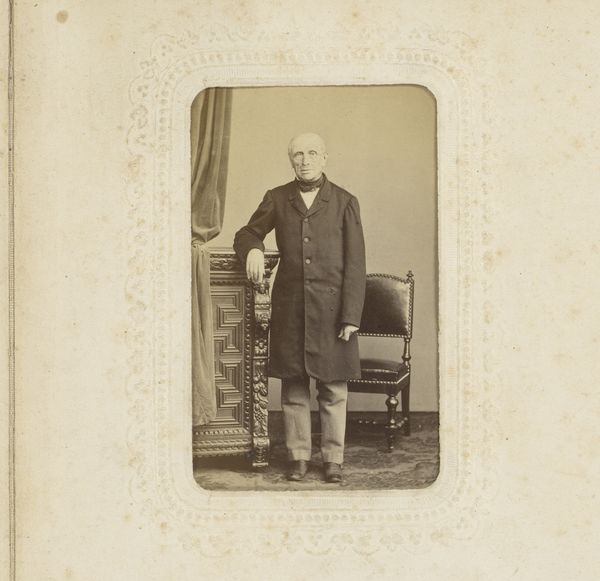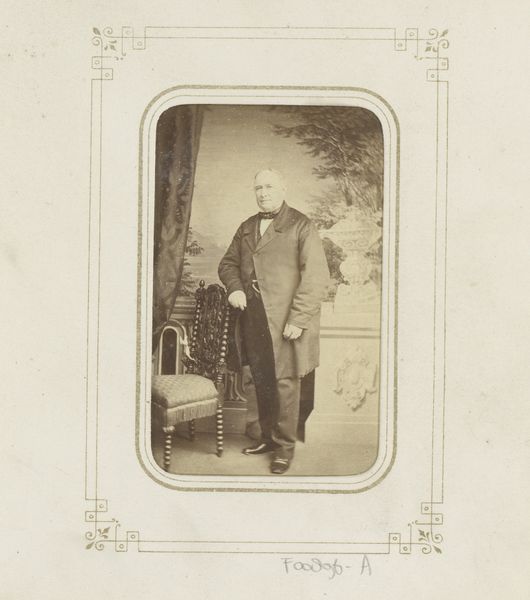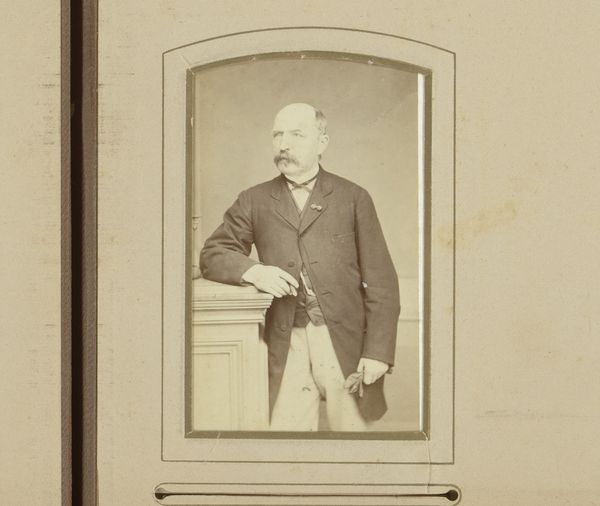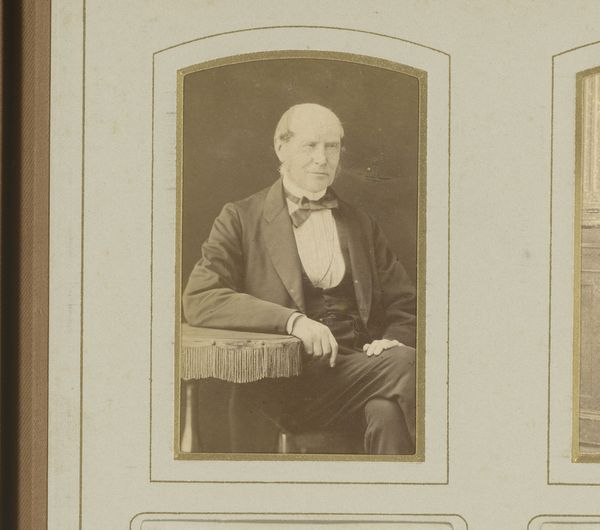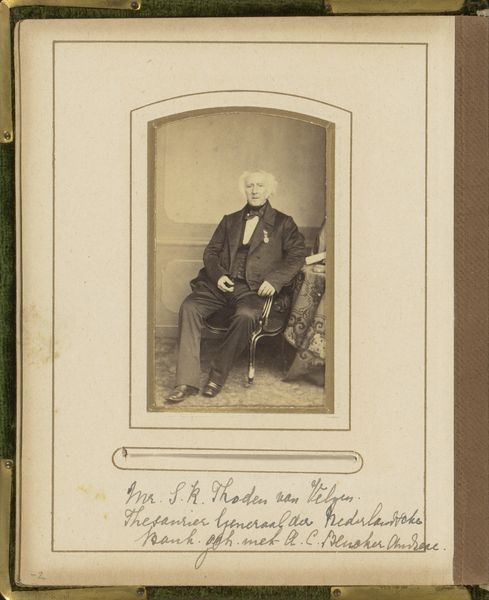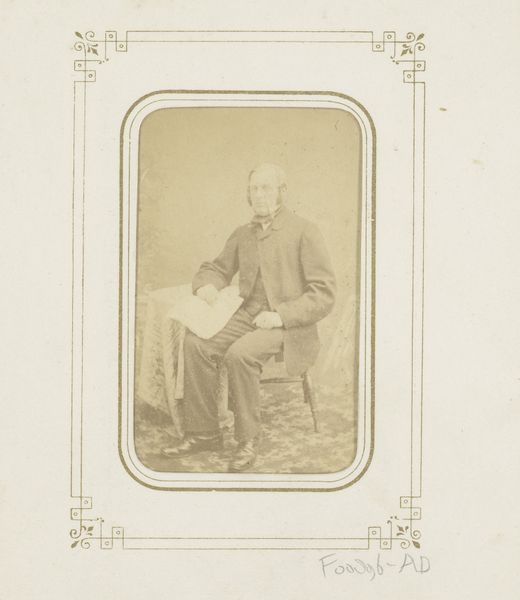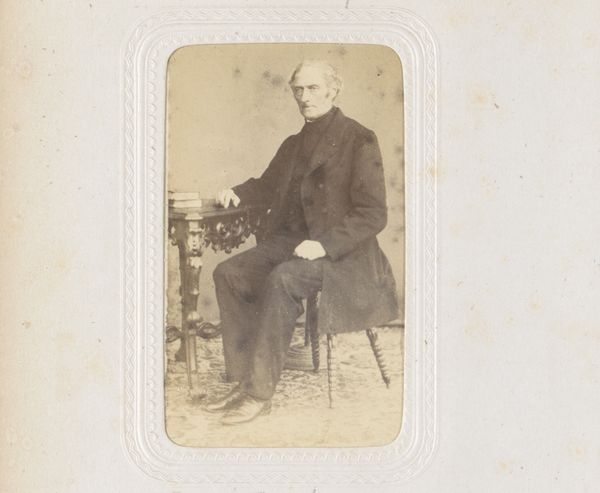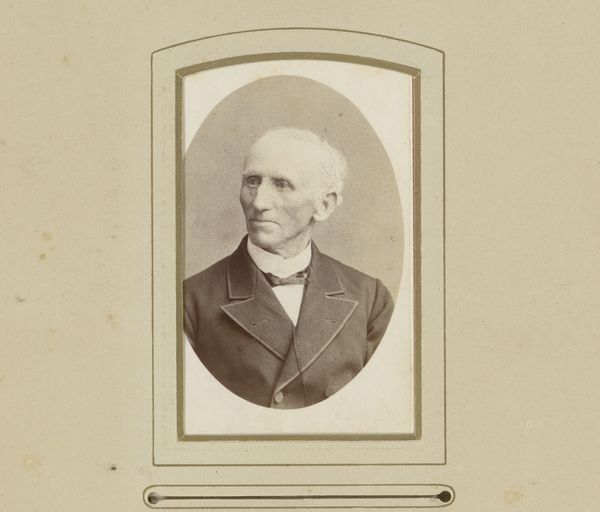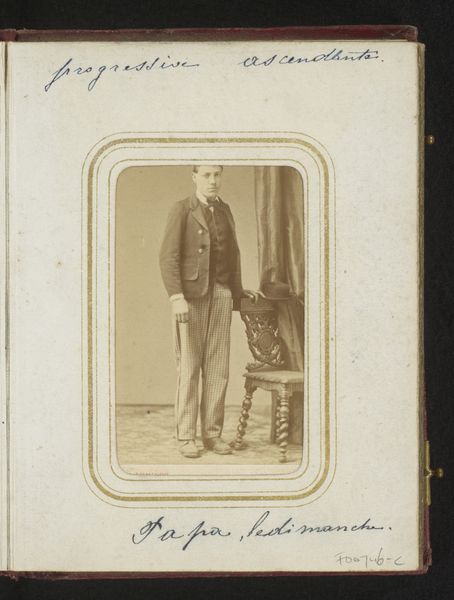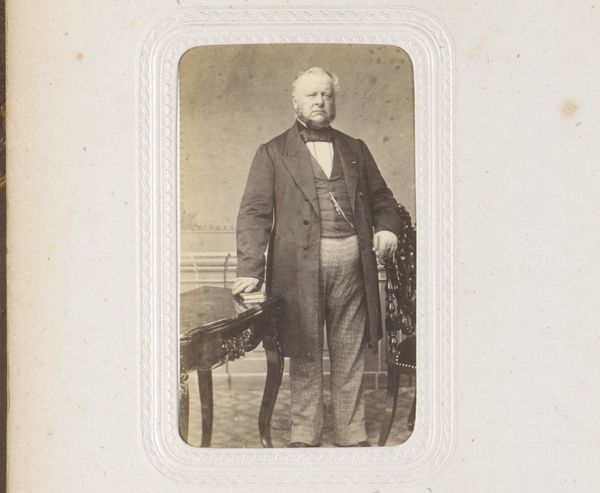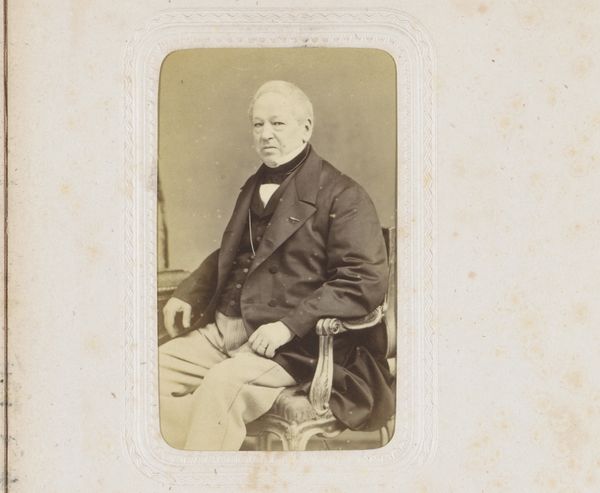
Dimensions: height 100 mm, width 62 mm
Copyright: Rijks Museum: Open Domain
Curator: Let’s turn our attention to this portrait, "Portret van een staande man," created between 1855 and 1870 by the London School of Photography. It’s a gelatin-silver print. Editor: My first impression is one of reserved dignity, though the lighting and the subject's gaze suggest a certain introspection. You can almost feel the starch in that collar! Curator: Precisely. This was a period when photography became more accessible, influencing social perceptions of status and representation. Notice how the setting, though sparse, conveys a sense of cultivated respectability. Editor: The chair, the table draped just so... It all speaks to careful staging. You know, examining the process—the labour of setting up a portrait studio, preparing the chemicals, posing the sitter—underscores photography’s connection to industrial and class dynamics. Curator: Absolutely. Photography, as an emerging medium, democratised portraiture. It wasn't just the elite who could capture and preserve their likeness. Though the poses, often stiff and formal, reflected Victorian society's codes and conventions. Editor: Codes meant to project power. Think of the materials as signifiers—the silver, the gelatin, all mediated through the photographer's craft. Each material contributes to the image's ultimate consumption as a signifier of status. Curator: And the role of institutions like the London School of Photography cannot be overlooked; they helped shape the aesthetic values and techniques, thereby dictating which representations were deemed artistically or socially acceptable. Editor: That frame also deserves our attention, a decorative embellishment meant to elevate a commonplace technology into the realm of art. All these touches conceal photography's potential for mass reproduction, pushing it into individual, aestheticized consumption. Curator: It's an insightful reminder of how art adapts to social forces. Thank you for sharing your material perspective on this. Editor: Indeed. It enriches our understanding to consider not just what is depicted, but how, and within what structure of labor and exchange.
Comments
No comments
Be the first to comment and join the conversation on the ultimate creative platform.
